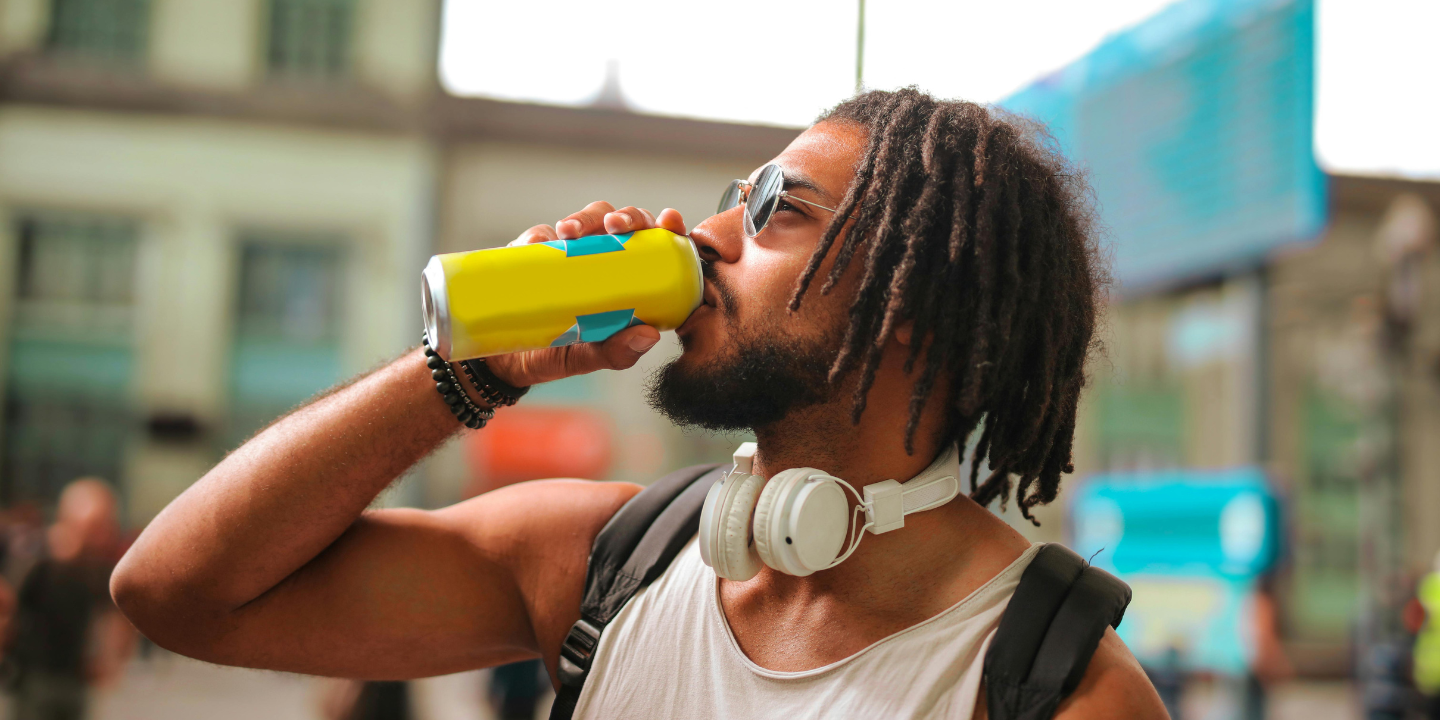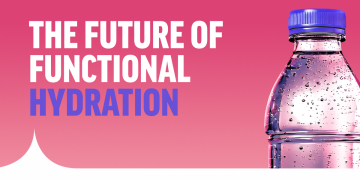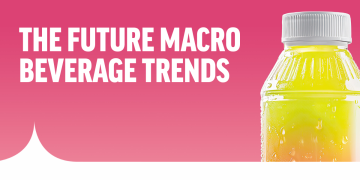The energy drink market is constantly evolving. Key trends are influencing its trajectory, and research indicates that consumers today desire a variety of benefits from energy drinks. They are looking for a high-performing drink and a premium experience, as well as natural, functional benefits that deliver real results.
The changing demographic landscape
Once primarily focused on younger demographics, the energy drink market category is expanding to meet more diverse consumer needs. Functional benefits and natural ingredients are broadening the appeal, attracting health-conscious individuals of all ages. In the US, 44% of high-income energy drink female consumers aged 18-34 are drinking more energy drinks compared to last year. Among women aged 18 to 44, 42% have increased their consumption of energy drinks as they explore new brands, while 40% feel that there are superior flavors available in the market.
Great taste and caffeine are the top attributes that today’s consumers look for in an energy beverage, followed by vitamins, minerals, taurine and guarana. In addition to energy and stamina, consumers are using energy drinks to improve performance (19%), stay hydrated (10%), help with concentration (8%) and reduce sugar in their diets (6%), all of which align with a desire to meet broader wellness goals.
Consumers are paying closer attention to ingredient labels, driving demand for products with transparent labeling. There is a growing interest worldwide in the transparent sourcing and sustainability of ingredients.
Focus on functional value
Consumers are increasingly turning to beverages that offer additional benefits beyond a simple energy and caffeine boost. They want added functional benefits from innovative, better-for-you (BFY) brands such as improved focus, cognitive function, hydration and sports performance to complement a healthier, more active lifestyle.
More natural, less sugar
In response to consumer demand for healthier options, the energy drink industry is placing a strong emphasis on clean energy beverages. Crafted with naturally sourced ingredients and free from artificial sweeteners, synthetic colors, and other additives, more brands are emerging with lower baseline sugar levels than ever before. One in six US consumers want their energy drinks to have no or low sugar, a trend that will continue to grow as more consumers demand sustained energy solutions and options to support weight management and workout goals in a healthier way.
Cognitive enhancement
Products that are marketed as being beneficial for cognitive health are typically formulated with nootropics, a scientifically supported class of ingredients that can improve cognitive function. Ingredients that support brain health, such as L-theanine, citicoline and ginseng, are also gaining popularity.
Energy drink brands may also choose to use clinically backed ingredients such as Kyowa's Cognizin® Citicoline, a brain health nutrient, which bolsters mental energy, focus, attention and recall. It is manufactured through an innovative fermentation process and is allergen-free.
Vitamins, particularly B complex vitamins, are in high demand for their role in energy metabolism. Another rising star in functional sports nutrition is L-tyrosine, one of the fastest-growing ingredients in the category.
Flavor innovations
While lemon, lime, orange and berry flavors have long been favorites among traditional energy drink consumers, brands are now using flavor to differentiate their products and cater to more adventurous palates. Even industry giants are experimenting with exciting, new flavor combinations, like vanilla flavors with icy-fresh notes of eucalyptus.
Flavors inspired by coffee house beverages, such as matcha latte and caramel macchiato, are gaining traction to enhance the "café chic" image. Natural fruit flavors and botanical extracts are increasingly popular, particularly elderberry and hibiscus, offering a refreshing twist to energy drinks. Exotic fruits like kiwi, yuzu and starfruit are also emerging as exciting flavor profiles. To further differentiate themselves, brands are experimenting with unique and nostalgic flavor combinations such as candy-inspired flavors that rekindle fun, childhood moments, like Oreos, gummy bears or bubble gum.
Energizing solutions without caffeine
Green coffee extract provides a natural source of caffeine for clean label energy drinks. Matcha green tea is also rising in popularity, offering plant-based, natural energy without the jitters of synthetic caffeine.
In 2024, around 6 in 10 French, Spanish and Italian adults limited caffeine intake to avoid disrupting their sleep. This is reflected in social media, where caffeine mentions in the UK reveal positive references to matcha and antioxidants but negative references to sleep and avoidance. As discussions around mental health continue to grow, concerns about caffeine's impact on sleep, restlessness, and anxiety are becoming more prominent.
Adaptogenic mushrooms are gaining traction in mainstream energy drinks, providing plant-based, caffeine-free stimulation. Recent product launches featuring mushroom extracts highlight their growing popularity and the sector's botanical evolution.
Beyond electrolytes for enhanced hydration
Electrolytes featured in a record number of global non-alcoholic beverage launches in the year to June 2024, partly thanks to Prime's global distribution. But the enhanced hydration trend is approaching a saturation point. Consumer understanding of healthy hydration is set to stay, but brands should explore where it can go next, especially amid concerns about excessive electrolyte (sodium) intake. Sodium is a vital mineral that needs replenishing, but almost all populations are consuming too much sodium, risking heart problems. Also, new research shows that just one extra gram of sodium per day may increase the risk of an eczema flare by 16%.
Many Europeans doubt the efficacy of electrolytes and are unsure whether electrolytes boost the hydration quality of bottled water, although Gen Z is notably more likely to agree that they do.
Hydrogen-infused water reportedly has anti-inflammatory, antioxidant and energizing benefits. Its market potential is weakened by lack of scientific proof but boosted by strong social media attention in the US markets.
Sports nutrition is peaking
Energy drinks are increasingly targeting athletes and sport enthusiasts with formulations that enhance physical performance. More energy drink brands are adding performance and recovery ingredients such as BCAAs and creatine. While not the same as sports drinks, energy drinks can provide many of the same benefits, leading energy drink companies to market toward individuals seeking physical performance optimization. In a future society challenged by stress, crash-dieting and more sedentary online living - especially among Gen Zs and aging millennials - exercise will be regarded as a solution, boosting demand for rapid rehydration drinks.
However, by 2030, the rapid rehydration sector of sports drinks, characterized by large doses of electrolytes and nutrients, will have peaked. As energy drink innovation starts to blur with other wellness benefits, consumers may experience choice paralysis, reigniting demand for simpler energy drinks. For many exercisers, plain, purified water will appeal.
Gaming as a trending sector
Energy drinks have become a dietary staple for many teens and young adults and are heavily integrated with esports and gaming. Fatigue relief is cited as a primary reason for consuming energy drinks, providing a mental boost and combating drowsiness, especially during late-night gaming sessions. Enjoyment was often tied to taste preferences and the fulfilment of sweet cravings without excess sugar. Gaming performance was a significant motivation, with participants seeking enhanced focus, reaction times and overall energy to stay competitive and maintain an edge.
Looking ahead at innovation opportunities
Concerns about the potential health risks of some energy drinks are forcing government intervention, but the sector remains buoyant.
By 2030, heightened consumer interest in mood and productivity boosts will increase production of energy drinks with adaptogens, vitamins and minerals, as well as sugar-free and plant-based options. Consumers have the knowledge at their fingertips to access online research and data, so are more likely to scrutinize the claims of energy drinks, only choosing beverages that deliver on ingredient quality, efficacy and flavor.
The consumer base for energy drinks will continue to diversify beyond the young male core audience, helped by the global roll-out of fitness and flavour-forward brands. However, although exotic, less sweet flavors and medicinal mushrooms will develop a higher profile, no-nonsense, affordable brands will remain a staple.
The sheer size of the energy drink sector could potentially prompt choice paralysis among overwhelmed consumers. This, in turn, will drive demand for minimalist drinks that solely and effectively deliver an energy boost using natural caffeine, so the energy drink market may well go full circle.



